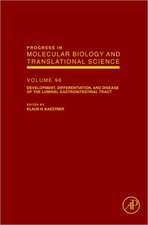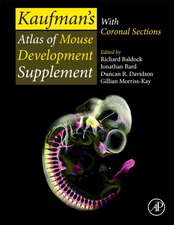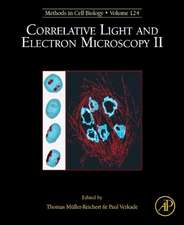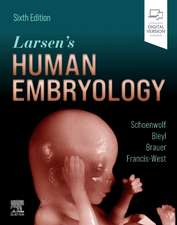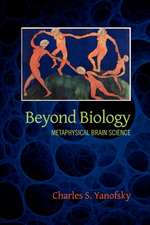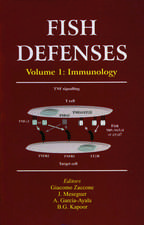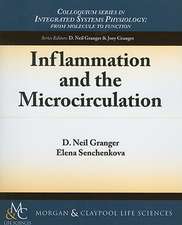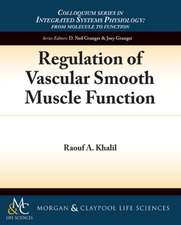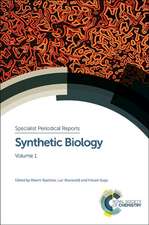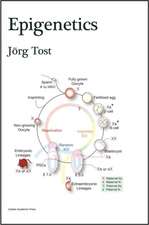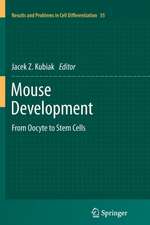Craniofacial Development The Tissue and Molecular Interactions That Control Development of the Head: Advances in Anatomy, Embryology and Cell Biology, cartea 169
Autor Philippa H. Francis-West, Lesley Robson, Darrell J.R. Evansen Limba Engleză Paperback – 15 apr 2003
Din seria Advances in Anatomy, Embryology and Cell Biology
- 5%
 Preț: 1146.33 lei
Preț: 1146.33 lei - 5%
 Preț: 721.19 lei
Preț: 721.19 lei - 15%
 Preț: 637.13 lei
Preț: 637.13 lei -
 Preț: 381.81 lei
Preț: 381.81 lei - 15%
 Preț: 644.95 lei
Preț: 644.95 lei - 5%
 Preț: 1025.16 lei
Preț: 1025.16 lei - 15%
 Preț: 689.97 lei
Preț: 689.97 lei - 15%
 Preț: 577.07 lei
Preț: 577.07 lei - 15%
 Preț: 580.36 lei
Preț: 580.36 lei - 5%
 Preț: 393.51 lei
Preț: 393.51 lei -
 Preț: 408.66 lei
Preț: 408.66 lei -
![Die Schlüpfdrüse der Geburtshelferkröte (Alytes o. obstetricans [LAURENTI]) und anderer Froschlurche](https://i4.books-express.ro/bs/9783662239742/die-schluepfdruese-der-geburtshelferkroete-alytes-o-obstetricans-laurenti-und-anderer-froschlurche.jpg) Preț: 408.27 lei
Preț: 408.27 lei - 5%
 Preț: 1090.61 lei
Preț: 1090.61 lei - 5%
 Preț: 705.11 lei
Preț: 705.11 lei - 5%
 Preț: 706.04 lei
Preț: 706.04 lei - 5%
 Preț: 357.61 lei
Preț: 357.61 lei - 5%
 Preț: 704.59 lei
Preț: 704.59 lei - 5%
 Preț: 705.11 lei
Preț: 705.11 lei - 5%
 Preț: 359.42 lei
Preț: 359.42 lei - 5%
 Preț: 711.52 lei
Preț: 711.52 lei - 15%
 Preț: 635.47 lei
Preț: 635.47 lei - 15%
 Preț: 631.72 lei
Preț: 631.72 lei - 15%
 Preț: 633.35 lei
Preț: 633.35 lei - 15%
 Preț: 632.37 lei
Preț: 632.37 lei - 5%
 Preț: 706.60 lei
Preț: 706.60 lei - 15%
 Preț: 631.07 lei
Preț: 631.07 lei - 5%
 Preț: 707.13 lei
Preț: 707.13 lei - 5%
 Preț: 707.33 lei
Preț: 707.33 lei - 5%
 Preț: 359.60 lei
Preț: 359.60 lei - 5%
 Preț: 707.69 lei
Preț: 707.69 lei - 5%
 Preț: 707.13 lei
Preț: 707.13 lei - 5%
 Preț: 708.06 lei
Preț: 708.06 lei - 5%
 Preț: 706.41 lei
Preț: 706.41 lei - 5%
 Preț: 708.78 lei
Preț: 708.78 lei - 5%
 Preț: 705.68 lei
Preț: 705.68 lei - 5%
 Preț: 705.11 lei
Preț: 705.11 lei - 5%
 Preț: 706.77 lei
Preț: 706.77 lei - 15%
 Preț: 635.15 lei
Preț: 635.15 lei - 15%
 Preț: 631.07 lei
Preț: 631.07 lei - 5%
 Preț: 706.77 lei
Preț: 706.77 lei - 5%
 Preț: 706.04 lei
Preț: 706.04 lei - 5%
 Preț: 710.79 lei
Preț: 710.79 lei - 5%
 Preț: 705.32 lei
Preț: 705.32 lei - 15%
 Preț: 633.19 lei
Preț: 633.19 lei - 15%
 Preț: 629.09 lei
Preț: 629.09 lei - 15%
 Preț: 633.53 lei
Preț: 633.53 lei - 15%
 Preț: 632.70 lei
Preț: 632.70 lei - 15%
 Preț: 633.68 lei
Preț: 633.68 lei - 18%
 Preț: 773.72 lei
Preț: 773.72 lei - 15%
 Preț: 630.43 lei
Preț: 630.43 lei
Preț: 636.12 lei
Preț vechi: 748.38 lei
-15% Nou
Puncte Express: 954
Preț estimativ în valută:
121.73€ • 130.16$ • 101.49£
121.73€ • 130.16$ • 101.49£
Carte tipărită la comandă
Livrare economică 18 aprilie-02 mai
Preluare comenzi: 021 569.72.76
Specificații
ISBN-13: 9783540003632
ISBN-10: 3540003630
Pagini: 150
Ilustrații: VI, 144 p.
Dimensiuni: 155 x 235 x 8 mm
Greutate: 0.3 kg
Ediția:Softcover reprint of the original 1st ed. 2003
Editura: Springer Berlin, Heidelberg
Colecția Springer
Seria Advances in Anatomy, Embryology and Cell Biology
Locul publicării:Berlin, Heidelberg, Germany
ISBN-10: 3540003630
Pagini: 150
Ilustrații: VI, 144 p.
Dimensiuni: 155 x 235 x 8 mm
Greutate: 0.3 kg
Ediția:Softcover reprint of the original 1st ed. 2003
Editura: Springer Berlin, Heidelberg
Colecția Springer
Seria Advances in Anatomy, Embryology and Cell Biology
Locul publicării:Berlin, Heidelberg, Germany
Public țintă
ResearchCuprins
1 Introduction.- 2 Neural and Head Development Are Intimately Linked.- 2.1 Exencephaly.- 2.2 Holoprosencephaly.- 3 Fate and Roles of the Neural Crest, Mesoderm, and Epithelium.- 3.1 Neural Crest.- 3.2 Mesoderm.- 3.3 Epithelium.- 4 Neural Crest Development.- 4.1 Generation.- 4.2 Segregation ofHindbrain Neural Crest.- 4.3 Migration.- 4.4 Proliferation and Survival.- 5 Growth and Patterning of the Face and Branchial Arches.- 5.1 Patterning of the Face and Branchial Arches.- 5.2 Growth Factor Regulation of Outgrowth of the Facial Primordia.- 5.3 Fusion of the Facial Primordia.- 6 Skeletal Development.- 6.1 Induction of Skeletal Structures.- 6.2 Skeletal Growth and Differentiation.- 7 Muscle Development.- 7.1 Origins and Migration.- 7.2 Muscle Differentiation.- 8 Human Craniofacial Syndromes.- 8.1 Riegers Syndrome.- 8.2 Treacher-Collins Syndrome.- 8.3 DiGeorge Syndrome.- Summary.- References.
Textul de pe ultima copertă
The molecular cascades that control craniofacial development have until recently been little understood. The paucity of data that exists has in part been due to the complexity of the head, which is a unique, and possibly one of the most intricate regions of the body. However, the generation of mouse mutants, the identification of gene mutations that cause human craniofacial syndromes, together with classical embryological approaches in other species has now given significant insight into how the head develops. These studies have emphasized how unique the head actually is with each individual part governed by a distinct set of signalling interactions, again demonstrating the complexity of this region of the body.

